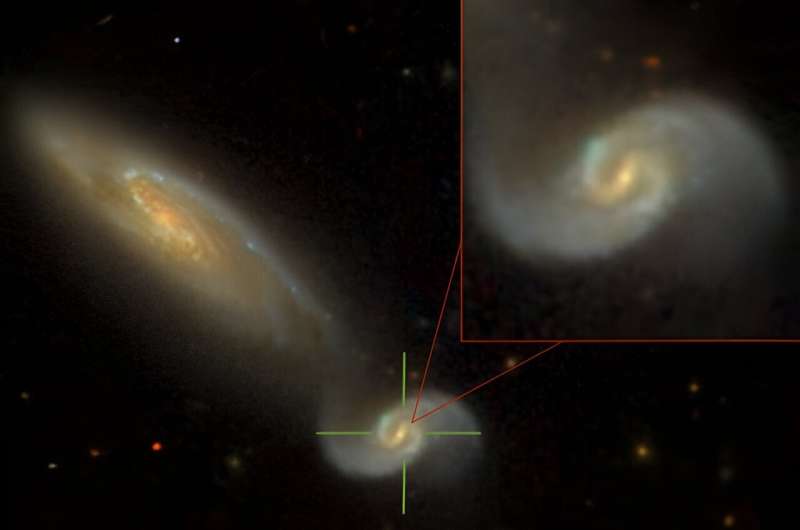February 1, 2024 report
This article has been reviewed according to Science X's editorial process and policies. Editors have highlighted the following attributes while ensuring the content's credibility:
fact-checked
preprint
trusted source
proofread
Observations shed more light on the properties of the nearest tidal disruption event

An international team of astronomers has conducted multiwavelength observations of AT 2023clx—the closest to Earth tidal disruption event (TDE). Results of the observational campaign, published Jan. 22 on the pre-print server arXiv, deliver important insights into the properties of this TDE.
TDEs are astronomical phenomena that occur when a star passes close enough to a supermassive black hole and is pulled apart by the black hole's tidal forces, causing the process of disruption. Such tidally disrupted stellar debris starts raining down on the black hole, and radiation emerges from the innermost region of accreting debris, which is an indicator of the presence of a TDE.
Located some 155.8 million light years away, in the nucleus of the galaxy NGC 3799, AT 2023clx is the closest known optical TDE. It was initially identified as a transient in 2014 and classified as a TDE in July 2023. With a maximum blackbody luminosity at a level of only 4.56 tredecillion erg/s, AT 2023clx is one of the faintest known tidal disruption events.
Given that AT 2023clx is a recently discovered TDE, very little is known about its properties. That is why a group of astronomers, led by Panos Charalampopoulos of the University of Turku in Finland, have performed an extensive study of TDE in optical, near-infrared and ultraviolet bands. For this purpose, they employed various space telescopes and ground-based observing facilities, including NASA's Swift spacecraft and the Nordic Optical Telescope (NOT).
"In this paper, we present the follow-up and thorough photometric and spectroscopic analysis of AT 2023clx," the researchers write.
The observations found that AT 2023clx had a peak absolute magnitude of −18.25 mag in the g-band and a maximum bolometric luminosity at a level of 32.4 tredecillion erg/s. This makes it an intermediate luminosity TDE. The mass of the supermassive black hole was estimated to be in the order of 1 million solar masses.
According to the study, AT 2023clx rose to its peak within 10.4 days, which makes it the fastest rising TDE known to date. The astronomers assume that such a fast rise was caused by the disruption of a very low-mass star (below 0.1 solar masses) with an impact parameter of approximately 0.8.
Spectroscopy revealed a blue continuum that cools slowly and broad Balmer and helium lines, which is typically observed in tidal disruption events. The lines slowly become narrower with time as their luminosity drops and this is also typically seen in known TDEs.
Observations of AT 2023clx have also found a sharp, narrow emission peak at a rest wavelength of about 6353 Å, on top of the blue side of the broad hydrogen-alpha profile. This is the first time when such a feature was found in a TDE.
Summing up the results, the researchers note that AT 2023clx is the result of the tidal disruption of a low-mass, small radius star, with low central concentration, close to full disruption but yet below the critical value. They add that such a disruption should show a sharper rise and a shallower decline in the light curves than other disruptions.
More information: P. Charalampopoulos et al, The fast transient AT 2023clx in the nearby LINER galaxy NGC 3799, as a tidal disruption event of a very low-mass star, arXiv (2024). DOI: 10.48550/arxiv.2401.11773
Journal information: arXiv
© 2024 Science X Network





















